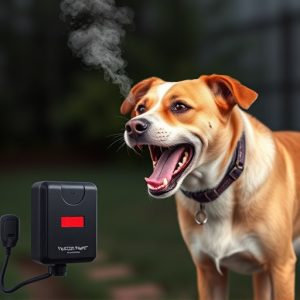Sonic Dog Training: Effectiveness, Safety, and Compliance Testing
Sonic dog training, utilizing inaudible high-frequency sounds from dog repellent devices, is a posit…….
Sonic dog training, utilizing inaudible high-frequency sounds from dog repellent devices, is a positive reinforcement method for modifying canine behavior, especially excessive barking. These devices require stringent compliance testing to ensure safety and effectiveness by assessing frequency, intensity, duration, and non-harmful operation. Rigorous assessments prevent false alarms, foster trust, and verify suitability for humane training solutions while prioritizing dog well-being over punishment methods like shock collars.
“Explore the innovative world of sonic dog training, a behavioral correction method gaining traction among pet owners. This article delves into the science behind this technology, offering a comprehensive guide for responsible usage. From understanding the principles that make sonic devices effective to navigating crucial compliance testing for these Dog Repellent Devices, we provide insights for safe and ethical implementation. Learn how to harness sound waves for positive canine behavior modification.”
- Understanding Sonic Dog Training and Its Principles
- Dog Repellent Device Compliance Testing: A Comprehensive Guide
- Implementing Safe and Effective Behavioral Correction Techniques
Understanding Sonic Dog Training and Its Principles
Sonic dog training is an innovative approach to behavioral correction that utilizes sound waves to communicate with canines. This method involves the use of a dog repellent device, often referred to as a sonic trainer or ultrasonic bark detector, which emits high-frequency sounds that are inaudible to humans but disruptive to dogs. The principles behind this technique are rooted in positive reinforcement and aversion therapy. By associating specific sounds with undesirable behaviors, such as excessive barking, the device encourages dogs to modify their actions to avoid the unpleasant auditory stimuli.
Compliance testing plays a critical role in ensuring the effectiveness and safety of sonic dog training devices. Rigorous trials are conducted to guarantee that these repellents meet specific criteria for frequency range, intensity, and duration of sound emission. This testing is essential to prevent any potential harm or discomfort to pets and ensure their well-being during training sessions. Moreover, it helps in fine-tuning the device’s sensitivity to trigger only when necessary, minimizing false alarms and ensuring a positive learning environment for the dog.
Dog Repellent Device Compliance Testing: A Comprehensive Guide
Dog Repellent Device Compliance Testing is a crucial process that ensures the safety and effectiveness of tools used for behavioral correction. This testing involves rigorous assessments to verify that devices designed to deter unwanted canine behaviors meet established standards. The primary goal is to safeguard both dogs and their owners by confirming the product’s reliability, durability, and non-harmful operation.
Comprehensive testing includes evaluating the device’s range, activation sensitivity, and safety features. It also considers the impact on a dog’s well-being, ensuring no long-term adverse effects. By subjecting these devices to various scenarios and performance metrics, manufacturers can provide assurance that their products are suitable for intended use, thereby fostering trust among pet owners seeking effective yet humane solutions for training and correction.
Implementing Safe and Effective Behavioral Correction Techniques
Implementing safe and effective behavioral correction techniques is paramount in dog training, especially when dealing with persistent unwanted behaviors. It’s crucial to remember that punishment-based methods, like shock collars or other dog repellent devices, can have negative consequences if not used responsibly. Before employing any correction technique, thorough compliance testing is essential to ensure the device functions as intended and has minimal impact on the dog’s well-being. This involves rigorous trials in controlled environments to confirm the safety and effectiveness of the chosen method.
Dog trainers and owners should opt for positive reinforcement techniques whenever possible, as they foster a stronger bond between the dog and trainer while encouraging desired behaviors. Behavioral correction should be a last resort, applied calmly and consistently with an understanding of the dog’s motivation behind their actions. By combining these safe practices with regular training sessions, you can effectively address problematic behaviors while promoting a happy and healthy relationship with your canine companion.
Sonic dog training, when employed with a focus on behavioral correction using compliant devices, offers a safe and effective approach to modifying canine behavior. By understanding the underlying principles and adhering to comprehensive testing guidelines for dog repellent devices, pet owners can ensure their chosen methods are both humane and successful. Implementing these techniques requires patience and consistency, but the results can lead to a more well-behaved companion. Remember, proper training enhances the bond between owner and dog, creating a harmonious relationship built on mutual respect.


